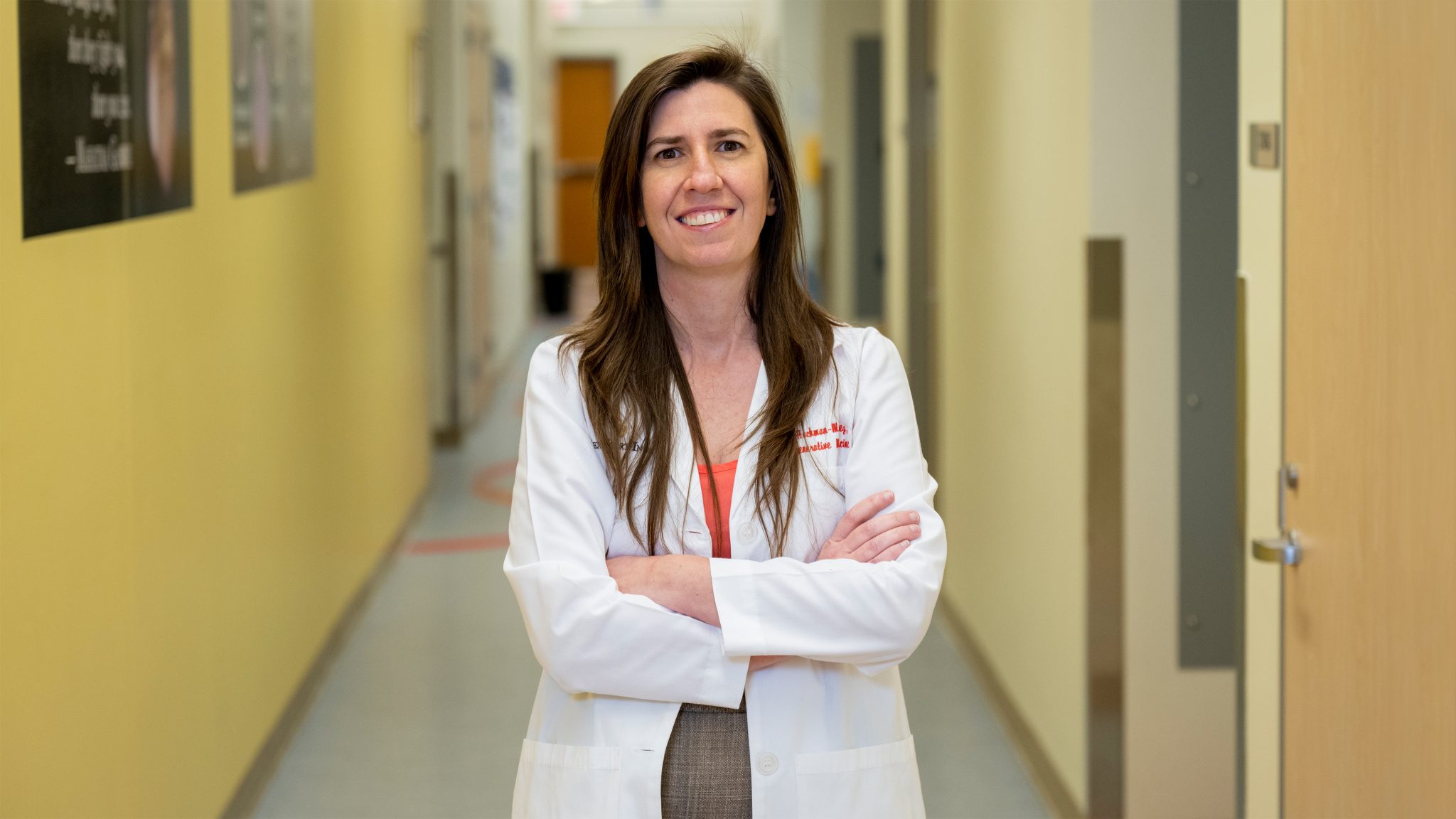Improving Outcomes After Cell Therapy May Be Linked to Patient Characteristics

Investigators at The Texas Heart Institute (THI) have gained new insights into patient-related factors that may affect clinical outcomes after cell therapy for heart disease. Their findings suggest that the types of factors that patients’ cells secrete are important in determining whether a patient will benefit from cell therapy.
Cell therapy has been studied for years as an alternative way to treat heart disease. One approach to this therapy has been to inject stem cells obtained from a patient’s own bone marrow into the heart (known as autologous cell therapy) to help the heart function better. Although the safety of this therapy has been proved, its effectiveness has been inconsistent, in part, because of our limited understanding of exactly how cells work to improve heart function. The Regenerative Medicine Research Department at THI is trying to unravel the mechanisms of action of injected cells and how they provide functional cardiac benefits. Their recent results suggest optimizing outcomes after autologous cell therapy may relate to patient characteristics, including the number and specific types of cells a patient has in the bone marrow and the factors each cell secretes.
The THI Biorepository and Biospecimen Profiling Core (BRC) Laboratory stores and processes biological materials such as tissues and blood products from investigators’ research and large clinical trials. For their study, Dr. Camila Hochman-Mendez, Director of Regenerative Medicine Research and the BRC at THI, and colleagues examined bone marrow samples stored at the biorepository from the first-generation FOCUS-CCTRN clinical trial. This trial, conducted by Dr. Emerson C. Perin, Medical Director of THI, and the National Institutes of Health (NIH) Cardiovascular Cell Therapy Research Network, examined the use of autologous cell therapy (cells obtained from a patient’s own bone marrow) in patients with chronic heart failure.
THI investigators have previously studied the bone marrow composition of patients in the FOCUS-CCTRN trial and reported differences in overall cell composition in the bone marrow at baseline (before treatment) in patients who did and did not improve. The goal of Dr. Hochman-Mendez’s current study was to identify intrinsic cell differences between patients in the FOCUS-CCTRN trial whose cardiac function improved and those whose cardiac function did not improve. Their findings have been published recently in Cells.
The bone marrow contains a rich mix of different types of stem cells. Over the years, investigators have honed in on one type in particular—the mesenchymal stromal cell (MSC)—that seems to have therapeutic potential. MSCs secrete multiple growth factors and protective molecules that can contribute to cardiovascular repair. Thus, the THI researchers sought to characterize any differences in MSCs between patients who improved and those who declined in heart function in the FOCUS-CCTRN trial.
They thawed bone marrow cells obtained from patients in the FOCUS-CCTRN trial that had been cryopreserved (frozen) in the biorepository. Then, they isolated the MSCs from the samples and cultured them in the laboratory to expand the cell populations for study. The researchers compared patient characteristics at baseline, the cell profile of MSCs in the bone marrow, and the types of factors secreted by the MSCs (known as the secretome) between the two groups. The factors that MSCs release into the local environment as part of the secretome are important because they can control biological and physiological processes such as cell movement and growth and tissue repair.
The study showed no differences in the cell profile of MSCs in the bone marrow between those who improved and those who didn’t; however, there were significant differences in the profile of the secretome (the factors secreted by the MSCs) between the two groups. Specifically, the secretome of patients who showed clinical improvement in the FOCUS-CCTRN trial contained specific factors related to various signaling pathways and cell structure components that were lacking in non-improver patients. The research also indicated differences in the cell composition of the overall bone marrow at baseline (before any treatment) between the two groups.
“Our results may help explain the different clinical outcomes and the inconsistencies seen in cell therapy trials,” explains Dr. Hochman-Mendez. “Studying the secretome of MSCs, meaning the factors they release into injured tissue, may provide important clues that we need to better understand how intrinsic patient characteristics affect outcomes after autologous cell therapy.”
The mechanisms of cardiac repair in the setting of heart failure are complex, but these findings give insight into how cell therapy can be used more optimally in treating this deadly disease. Moreover, the study shows the importance of intrinsic patient characteristics in clinical outcomes after autologous cell therapy and may be helpful in eventually identifying patients most likely to respond to this treatment.
“Our results can be used in designing better clinical trials for studying cell therapy, with an ultimate goal of delivering personalized medicine for patients with heart failure,” concludes Dr. Hochman-Mendez.
Read Report
Morrissey J, Mesquita FCP, Chacon-Alberty L, Hochman-Mendez C. Mining the Mesenchymal Stromal Cell Secretome in Patients with Chronic Left Ventricular Dysfunction. Cells. 2022 Jun 30;11(13):2092. doi: 10.3390/cells11132092.
News Story By Rebecca Bartow, PhD

.svg)


